Business Challenges Confronting the Chief Information Officer (CIO)
VerifiedAdded on 2019/09/20
|6
|1083
|71
Report
AI Summary
The Chief Information Officer (CIO) is a crucial position in the 21st century, responsible for devising information technology strategies to align with company goals and objectives. The role has evolved significantly, requiring CIOs to be adaptive to latest technologies, data, and skills. Key challenges faced by CIOs include addressing growing needs for agility, breaking free from technical debt, balancing data accessibility with security, adapting to a connected world, and bridging the skills gap. Additionally, CIOs must provide a singular experience across multiple platforms, deliver solutions quickly, and be accountable for keeping company data safe and secure.
Contribute Materials
Your contribution can guide someone’s learning journey. Share your
documents today.
1 out of 6
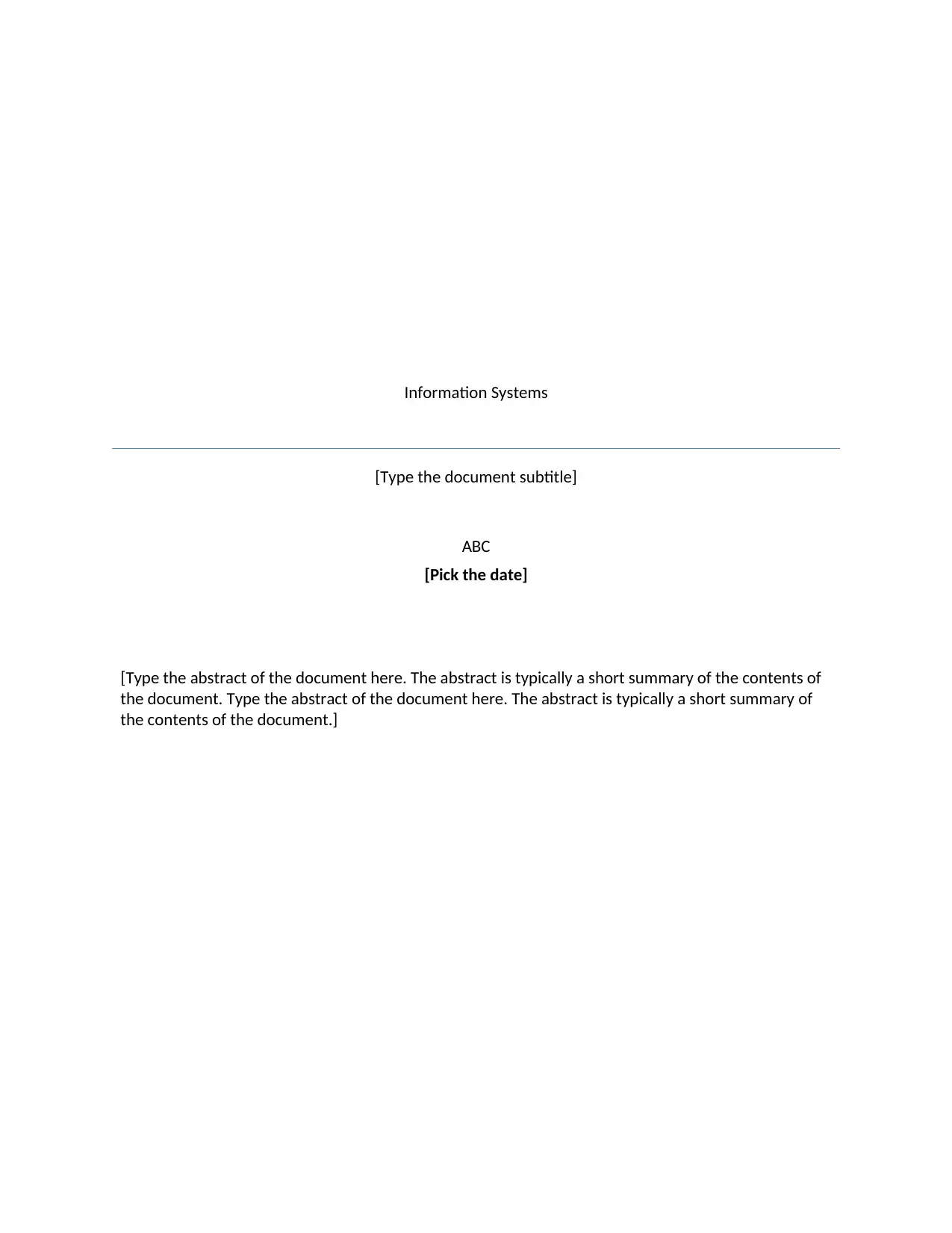
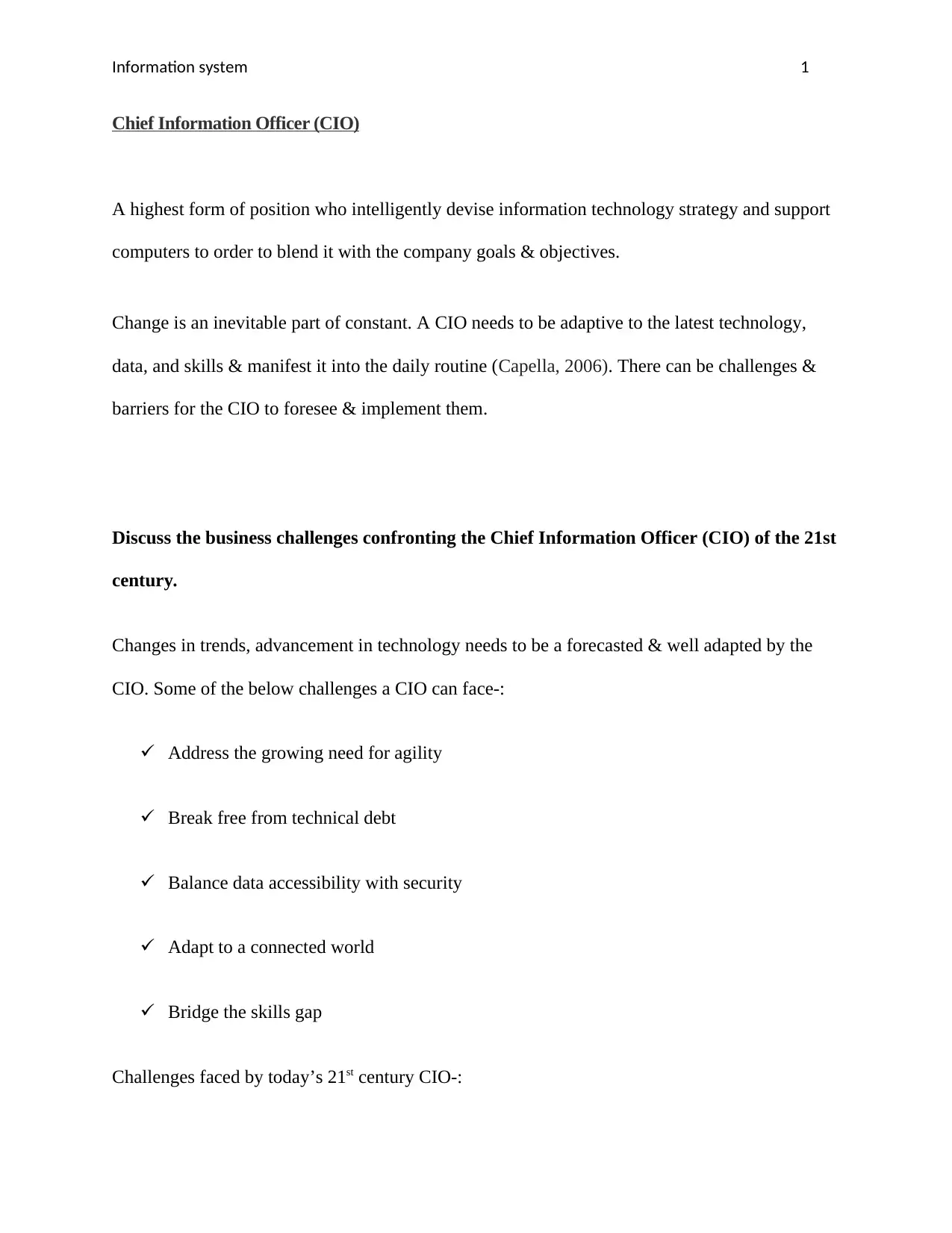
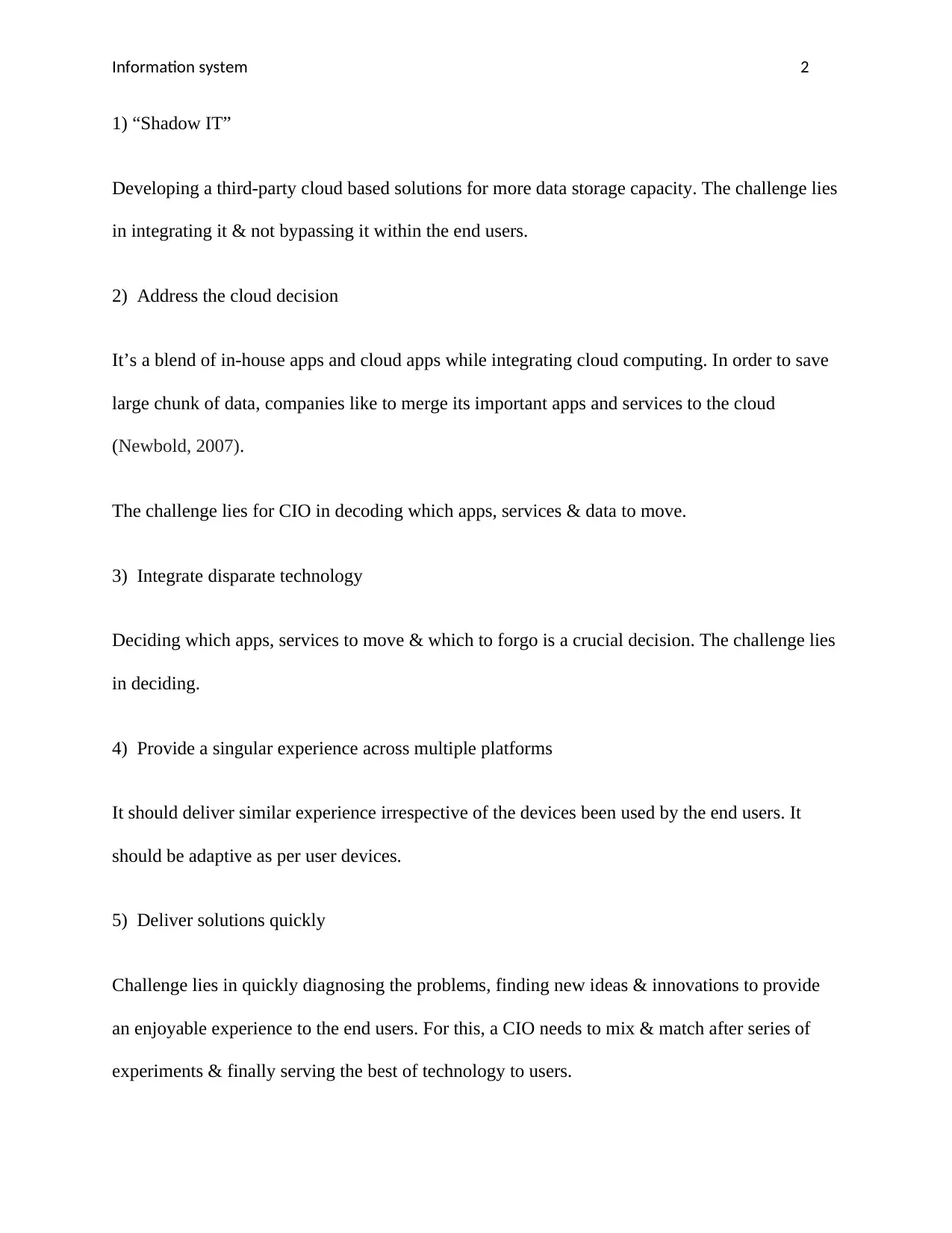
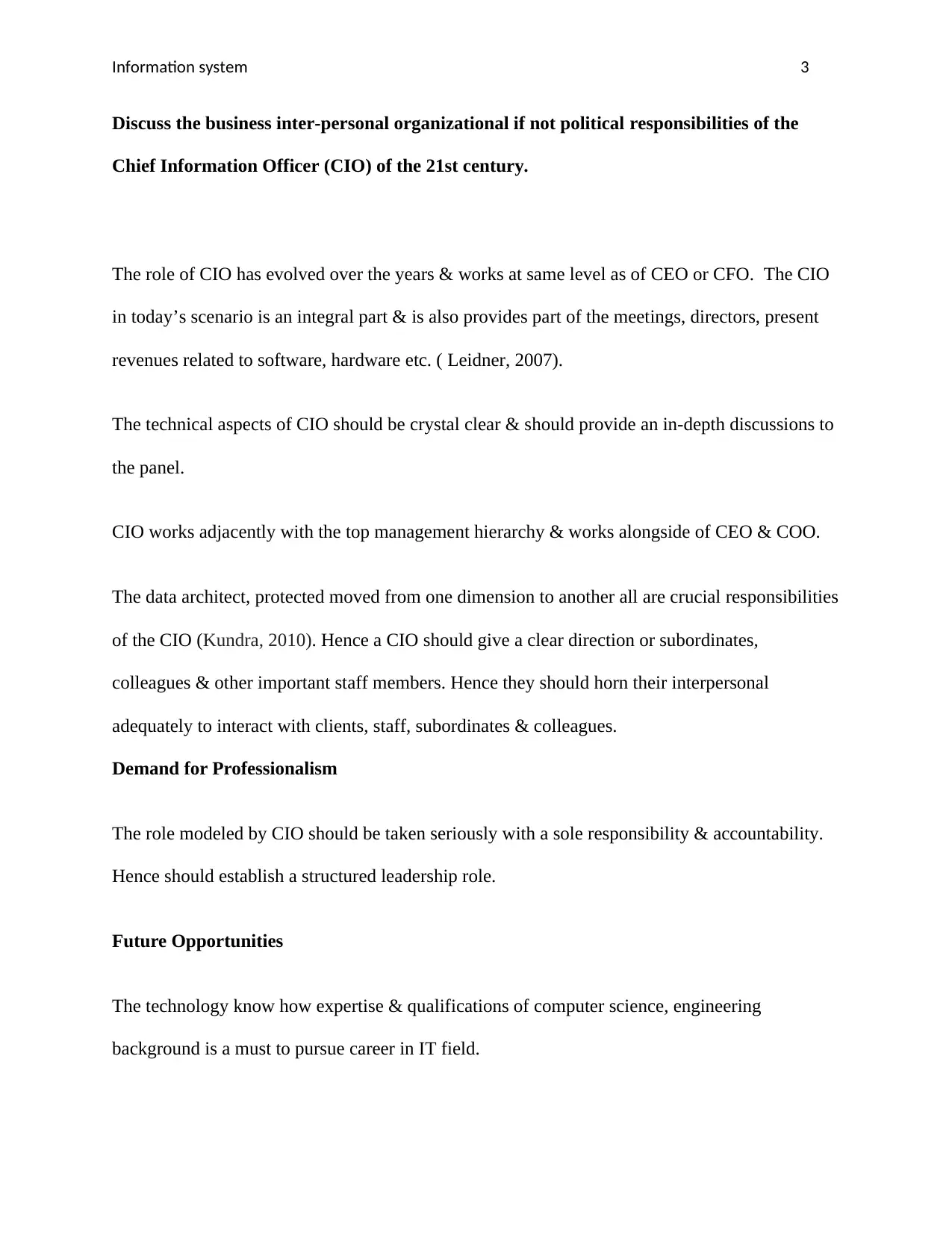
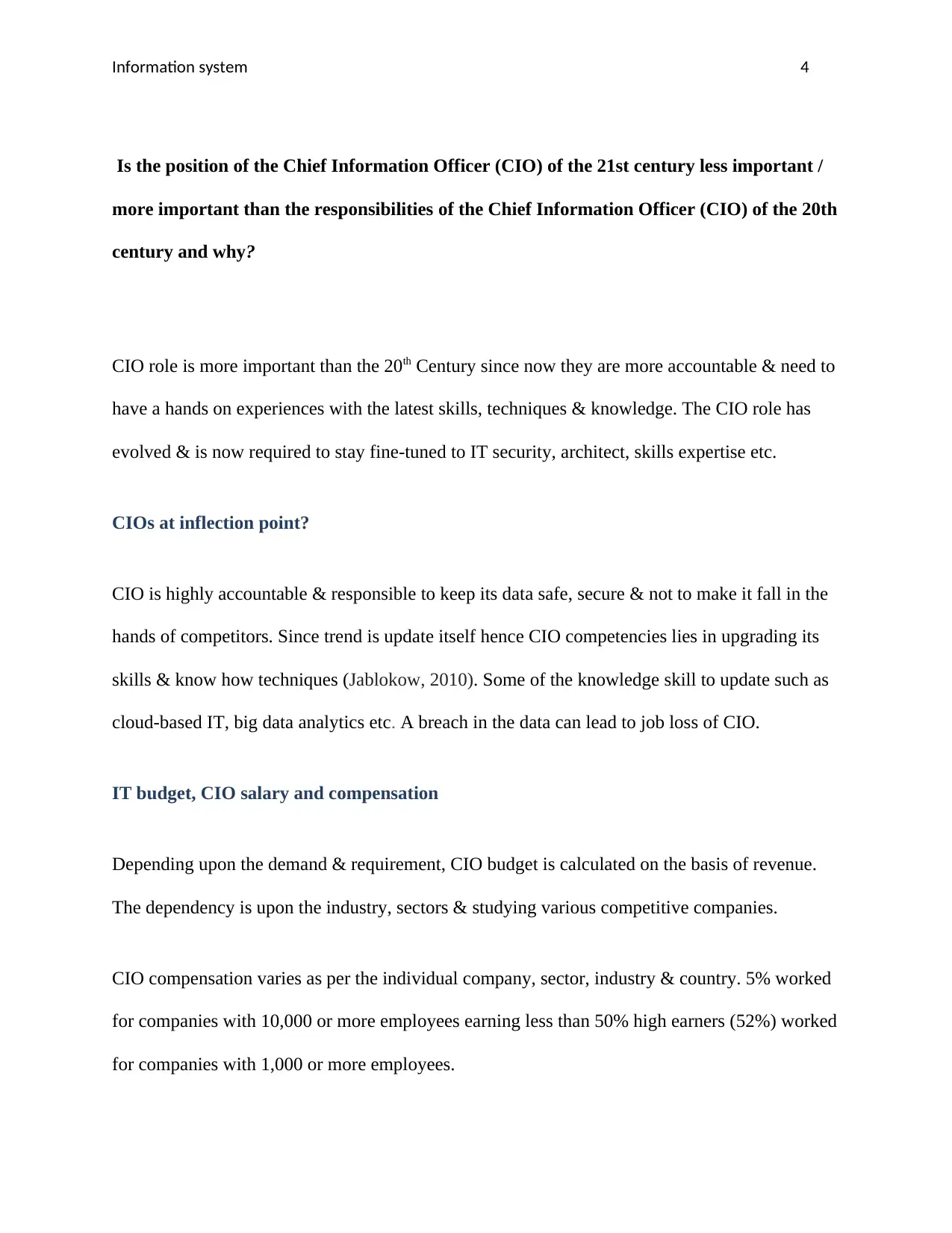
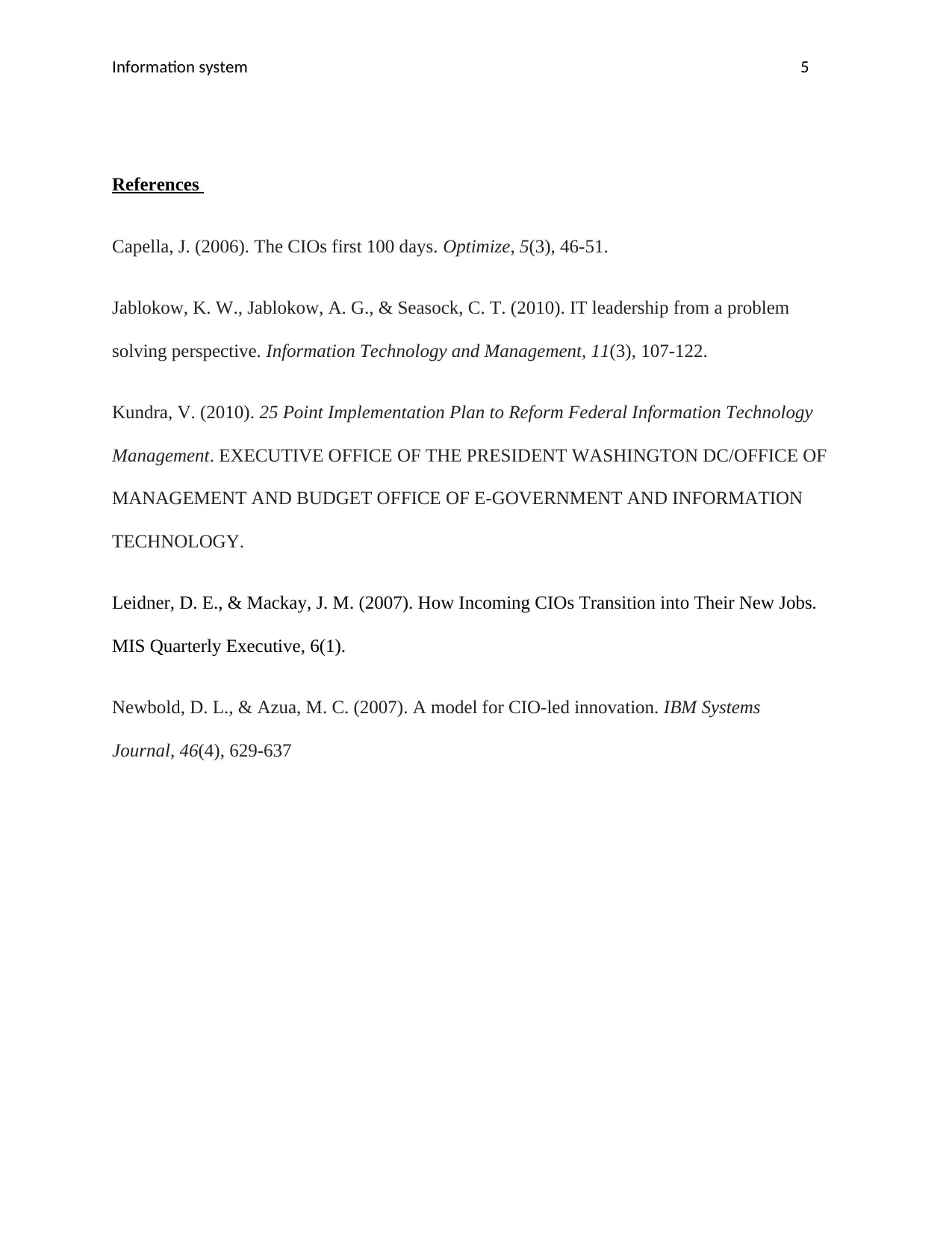




![[object Object]](/_next/static/media/star-bottom.7253800d.svg)